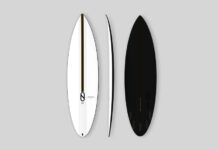Bentley was the first manufacturer to dominate the 24 Hours of Le Mans. Between 1924 and 1930 the British company scored five outright wins in the legendary French endurance race. Shortly after the fifth win Bentley was incorporated by Rolls-Royce and all racing activities were suspended. The Rolls-Royce ownership lasted for nearly 70 years and finally came to an end in 1998 when both companies were absorbed into the Volkswagen Audi Group (VAG). One of the results of the ownership change was a renewed interest in racing and in 2000 a three-year program was announced. The ultimate goal: Bentley’s sixth 24 Hours of Le Mans win.
One of the VAG’s other brands, Audi, was already involved in sports car racing, which both complicated and simplified Bentley’s Le Mans assault. It would make little sense for the two sister brands to race each other but on the other hand experience and resources could be shared. The regulations offered an ideal solution; the new Bentley would be built to race in the LM GTP class for closed prototypes. Audi’s 2000 Le Mans winning R8 competed in the LMP 900 class for open prototypes. Both classes had very similar regulations, which ensured that the two very different machines could still both race for overall glory.
Racing Technology Norfolk (RTN) was commissioned to design the new Bentley Le Mans racer. They had previously worked with Audi on the similar R8C that raced at Le Mans in 1999. While the R8C was designed by Tony Southgate, his compatriot Peter Elleray was hired to pen the Bentley that was labelled the EXP Speed 8. That was in reference to its experimental status, the 1929 and 1930 Le Mans winning Bentley Speed 6s and its eight cylinder engine. That twin-turbocharged V8 was the only common part shared with the Audi R8. The chassis, suspension, gearbox and aero-package were all developed from scratch.
Elleray penned a very elegant coupe shape with a relatively sharp nose and long tail. Underneath the carbon fiber panels, a sturdy carbon fiber monocoque could be found. Suspension was by double wishbones on both ends with torsion bar springs at the front and coils at the rear. Although a naturally aspirated engine was originally considered, it was eventually decided to fit the already victorious twin-turbo V8 engine. The compact 3.6 liter engine was mated to a six-speed gearbox that had been jointly developed by Bentley and Xtrac. The differences between the LMP 900 and LM GTP regulations meant that the Bentley featured slightly narrower tires than Audi R8, which was balanced out by a larger restrictor.

Find out more on ultimatecarpage.com
The very first EXP Speed 8 was tested extensively in 2000 and the lessons learned were carried over on the brand new chassis built for the 2001 24 Hours of Le Mans. Painted British Racing Green with silver accents, two examples were entered for the race. The #7 car failed to reach the finish but the #8 ended the race in a highly promising third overall and first in class. It was only beaten by two R8s. For 2002 only a single example was entered, which was fitted with a four-liter version of the V8 engine. The enlarged displacement suited the LM GTP restrictors a lot better. It could do no better than 4th this time round but again won the LM GTP class.
By this time Elleray and his team of designers was well under way with the development work for the definitive Speed 8. Apart from the four liter engine very little was carried over. The most fundamental change was the monocoque that now featured a raised footbox. As a result the front aerodynamics changed considerably with the air flowing through the suspension rather than over it. The air-intakes for the turbochargers were moved from the roof to the side-pods, much like on the Audi. The revised suspension now also featured torsion bar springs at the rear. For the first time in the project, a high-downforce ‘sprint’ aero-package was also created, so the car could race at other tracks than Le Mans.
The Bentley Speed 8 immediately demonstrated its potential by clinching the first two positions on the grid of the 2003 Sebring 12 Hours race. A rules infraction saw them stripped off their times and relegated to the back of the grid. The two Bentleys fought their way back up the leader-board in quick succession but failed to catch up with the two quickest R8s. The race was eventually won by the Joest entered R8 ahead of a sister car entered by the American Champion Racing. The Speed 8s had to make do with third and fourth overall, which was still a very strong result in their debut race.
Behind the scenes things were changed considerably for Le Mans. After three consecutive wins Audi and their partners Joest decided to leave racing the R8s mostly to privateers. This freed up resources and drivers for the Bentley program. The most visible element of this increased interest was the addition of Rinaldo Capello and Tom Kristensen to the Bentley driver line-up. They were paired with Guy Smith in the Joest run #7 car while Johnny Herbert, David Brabham and Mark Blundell raced the ‘British’ #8 car, which was run by RTN. Overseeing the all-star effort was Le Mans legend Derek Bell, who had been involved with the project from the very beginning.
The two Bentleys could be easily distinguished as the #7 car featured deep end plates on the rear wing, while the #8 Speed 8 sported more conventional end plates. The two different configurations yielded virtually identical lap times; the former produced a little more downforce while the latter resulted in less drag. The Speed 8s qualified first and second for the race and dominated from start to finish. An electrical problem saw the ‘British’ Bentley lose two laps, handing the win to the #7 car driven by Capello, Kristensen and Smith. The closest rival, a Champion entered Audi R8, finished a further three laps down from the second placed #8 Bentley.
The Bentley team had achieved their desired objective and retired from racing immediately after the 2003 Le Mans race. That was probably the single biggest let down of the whole program. Even though the Speed 8 had won at Le Mans in convincing fashion, it was not allowed to join the ranks of legendary sports racing cars. Another win at Le Mans and victories in events like the Sebring 12 Hours and Petit Le Mans would have promoted the Bentley to that level. Hopefully we do not have to wait another 70 years before the Bentley marque will be represented on the racing track again.
 About our photographer Rainer Selzer
About our photographer Rainer Selzer
Rainer Selzer is always ready for a big shot and is focused on historic motorsport.
He is working with us for over three years and visits motorsport events, classic car meetings or car museums. Follow him on instagram @rs65photos or visit his homepage www.rs65photos.com for more!
Report by Wouter Melissen / ultimatecarpage.com
Photos by Rainer Selzer / collectorscarworld.com and rs65photos.com










